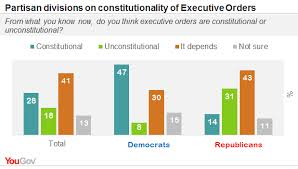
Utah has officially joined 16 other states in a lawsuit arguing the unconstitutionality of President Barak Obama's Executive Order on illegal immigration issued on November 20, 2014.
As part of this order, the President required more individuals, both children and adults, to be protected under the Deferred Action for Childhood Arrivals (DACA) program, allowing for more individuals to request waivers from deportment, particularly children brought into the United States before the age of 16, and parents whose children have been legally born in the U.S. While the Constitution does give the President the right to exercise this right, many argue that the scope and the issue covered by this order goes too far.
Under Article II of the Constitution, the President is given "executive power," however, it also admonishes the President to "recommend to [Congress] to their Consideration such Measures as he shall judge necessary and expedient." There is also caution to "take Care that the Laws be faithfully executed."
Executive Orders do not require permission from Congress to be implemented, though still carry the same weight, making them legally binding policy. Historically, every President of the United States has used this power with over 13,000 being issued. These include Eisenhower's order to desegregate schools, Franklin Roosevelt's order to establish internment camps for Japanese-Americans during World War II, and Abraham Lincoln's Emancipation Proclamation. FDR issued the most Executive Orders--3,522.
The Supreme Court has overturned two Executive Orders. The first was in 1952 when President Truman attempted to place all steel mills under federal law to prevent strikes during the Korean War. The second in 1995, under Clinton, who ordered federal contracts to be withheld from organizations that hired permanent replacement workers for employees on strike.
In the press release from the Utah Attorney General's Office, Attorney General Sean Reyes explained that President Obama's order is unconstitutional because of the process used to execute it.
"The process is not legal. Regardless of how you feel about the policy, it does not justify implementation in an unconstitutional manner," Reyes said.
In 2011, the Utah Legislature passed H.B. 497 Utah Illegal Immigration Enforcement Act, addressing the problem of illegal immigration in the State. Other states, including Arizona, Alabama and South Carolina, passed similar laws. However, the President and the Justice Department condemned the law pointing out that under the Constitution, only Congress has the exclusive right to enact laws of immigration.
In 2012, the Supreme Court heard arguments against Arizona's immigration law, SB 1070. Key sections, 3, 5(c) and 6, were struck down because they are "preempted by federal law", meaning they cannot be passed, nor enforced at a local level.
These sections required legal immigrants to carry identification cards at all time, allow state police forces to arrest anyone suspected of being an illegal immigrant, and made it a crime for an illegal immigrant to look for, or hold, a job. Following the Supreme Court Ruling, Utah began the process of amending its own immigration laws to reflect the ruling.
Reyes pointed out this discrepancy in the President's actions. "The President… must respect the rule of law and a balance of powers. At the same time, Congress has not only the legal authority but also the responsibility to take up matters such as these no matter how difficult they may be."